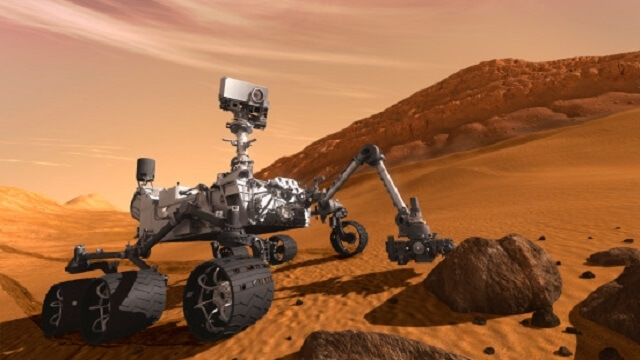
Started in 1958, NASA has been in the forefront of space exploration since then. A lot that we know about our universe is because of the space programs by NASA. Other space research organizations, such as ESA, ISRO and other made significant contributions in the recent past. However, it was NASA that laid down the foundation stone of space programs. Here is a list of the most significant discoveries made by NASA.
Presence of Water on Mars
As space exploration progressed, we became more and more obsessed with life on other planets. And for life, we needed water. Of all the planets in the solar system, beside Earth, Mars was the most probable candidate to host life. Hence began the search for water on Mars.

Viking 1 was the first of the two-spacecraft sent to Mars in 1976. The newest addition being Curiosity in 2012. It is Curiosity which detected hydrogen, carbon, oxygen, phosphorus, Sulphur – all the necessary ingredients to support life in Martian rocks. Also, Curiosity found rounded rocks, similar to pebbles we find in sea beaches or beside streams and rivers, indicating that Mars once had water. These ancient stream beds have now dried up. But also other rock formations and mineral veins in cracks of rocks prove Mars had a watery past.
Newer theories also say that Mars had an atmosphere that could support life. However, the magnetic field of the planet that is needed to protect the atmosphere from solar winds disappeared, leading to the dissipation of the Martian atmosphere.
Unveiling the Universe with Hubble
Prior to 1990, all the images of objects in space were captured using light based ground telescopes. All these telescopes were essentially cameras with really large lenses that could focus far away in the night sky. However, with the Earth’s atmosphere and the light pollution, it becomes very difficult to see deep space objects.
The solution was simple, put a telescope outside Earth’s atmosphere. Named after Edwin Hubble, the Hubble space telescope was put into orbit to take photos of the deep space objects and prove Edwin Hubble’s theory of an expanding universe.

Hubble allowed us to see high resolution, full color photographs of space and never before seen objects in space right from home. Even though Hubble has been superseded by Chandra X-Ray telescope, the Splitzer Telescope, and the to-be-launched James Webb Telescope that will hunt for life beyond earth, Hubble still amazes us with its space imagery.
4302 Exoplanets discovered by Kepler
The Kepler telescope discovered a staggering number of exoplanets since it went in service. Out of these, already 1284 are classified as planets, 1327 may be planets, but NASA is just not very sure, it will need some more research. Out of these, 9 of the planets could potentially have life.

However, most of these are hundreds and thousands of light years away and there are direct methods to check out whether the planet has life or not. However, these planets to fall in the habitable zone of a star, called the Goldilocks’ Zone, where temperature is optimal to have life. There are also other factors too that make a planet habitable.
The James Webb telescope that will be launched soon will be focused only on checking out is there is life on these planets.
TRAPPIST-1 Solar System

One of the most recent and major discoveries by NASA is the TRAPPIST-1 star and its solar system having seven earth like rocky planets. Of these planets, three are assumed to be habitable and are very likely to have liquid water. What is more interesting about this system is that it is very close to us – only 40 light years away, as compared to thousands of light years of those discovered by the Kepler telescope.
Earth’s Second Mini Moon

The Moon has been a part of our culture since the beginning of civilization. However, until recently, we were unware of another space rock circling the earth, along with the moon. Much smaller than the moon, measuring a few hundred feet across, the 2016HO3 is an asteroid that will orbit the earth for the next few hundred years. It is not visible to the naked eye at night, but it is considered as the most stable quasi-satellite of Earth.










